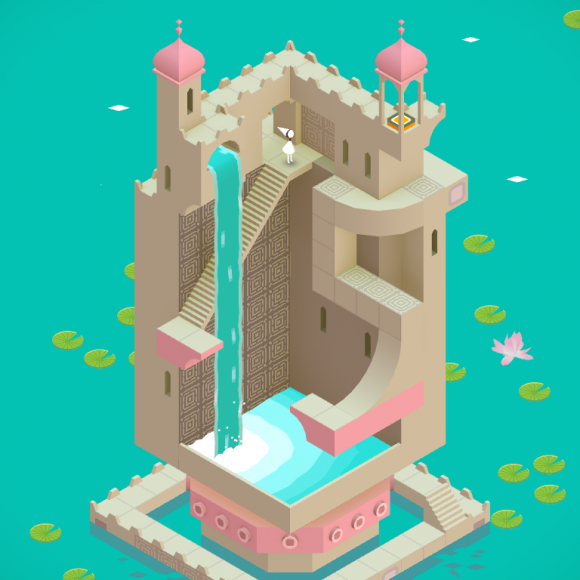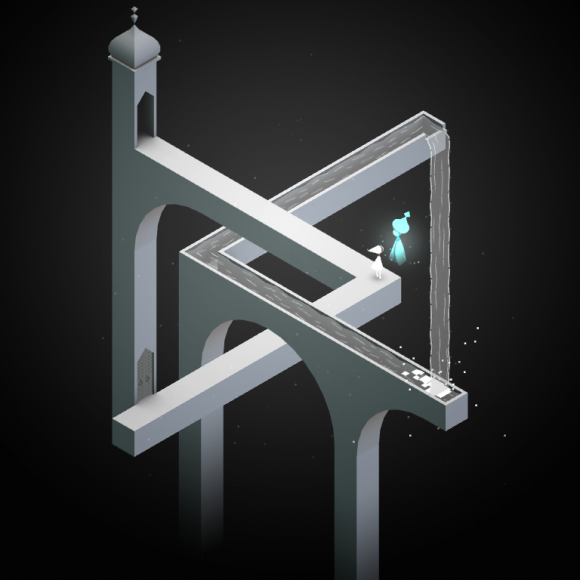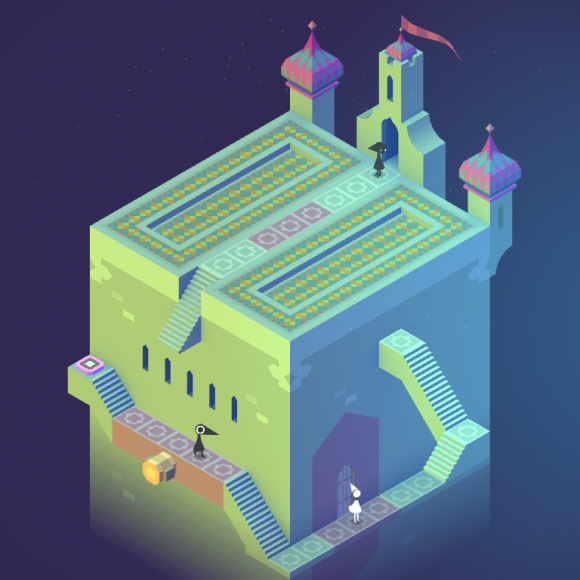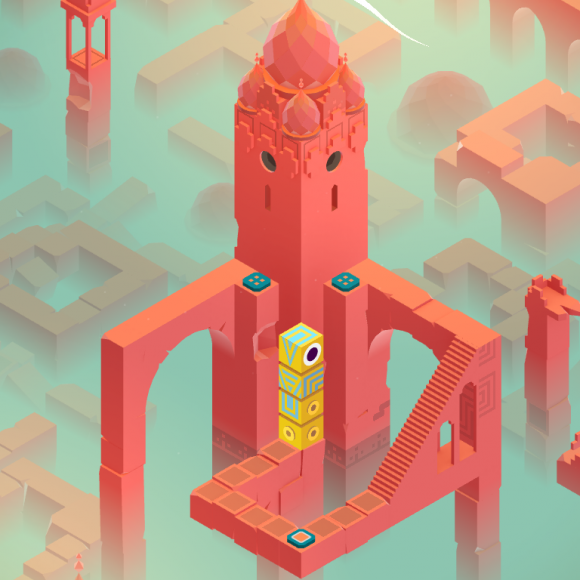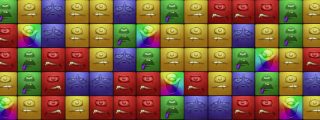It’s impossible to mention Monument Valley without also mentioning M.C. Escher. The dutch artist’s fascination with “impossible constructions” influences every corner of the game. It’s not the first time Escher’s art has influenced a video game. Anyone who played Echocrome back in 2008 probably has a pretty good idea what Monument Valley has in store for them.
But the difference is in the details. Where Echocrome was overstuffed with content and simple in design Monument Valley is beautifully rendered with immense detail at the cost of a much briefer experience. Let’s just get this out of the way now: Monument Valley looks incredible, it’s almost certainly the best looking game I’ve played on a mobile platform this year, and maybe even ever.
Monument Valley’s story follows a young princess named Ida who is navigating this geographically complex world in an attempt to atone for an unnamed sin from her past. The story is very light but gives you enough information to spin a little bit of a mystery that really is only partly explained by the end. You’re probably not going to complete Monument Valley to see what happens to Ida, you’re going to complete it to see each of its beautifully designed levels.
Completing the game’s levels involves manipulating the environment, usually by moving specially marked pieces to create new platforms and walkways for Ida to walk across. Some levels can be rotated in their entirety in order to gain the right perspective to progress further.
Every level in Monument Valley has its own unique mechanic for you to play with. For example in one area you will encounter a flock of crows who, when bumped into, will block your path and force you to find other ways around them. In another level you’ll encounter a totem that you can use to climb to higher points in the level or hold down switches.
While the game does definitely have some mind-bending moments I don’t think there are many players out there who will find themselves stuck for an extended period of time. Most of the time when I found myself having trouble progressing in the game it was less about solving a puzzle and more about searching for a button to press or object to drag in the environment. Pieces that you can move are usually labeled clearly but also tend to blend into the game’s beautiful levels.
It won’t take you long to complete Monument Valley. The game runs for just over an hour and a half which some people may take issue with given its $3.99 price tag. Honestly for me it wasn’t a huge issue, I definitely would have enjoyed an extended experience beyond the game’s initial ten levels, but at the same time I feel like I would have been willing to pay more for such an experience.
The developer has announced that they’re in the process of developing some new levels, though they haven’t revealed any timeframe or whether or not they plan to charge for them so take that information with a grain of salt.
Monument Valley is currently available on iOS, Android, and Kindle Fires, I’d highly recommend that no matter what platform you choose, the hardware be a tablet so that you can really take in the game’s spectacular visuals. If you’re looking for an extended brain teaser this probably isn’t the ticket, but if you want a very tightly crafted, highly polished experience, you should absolutely pick up Monument Valley.


